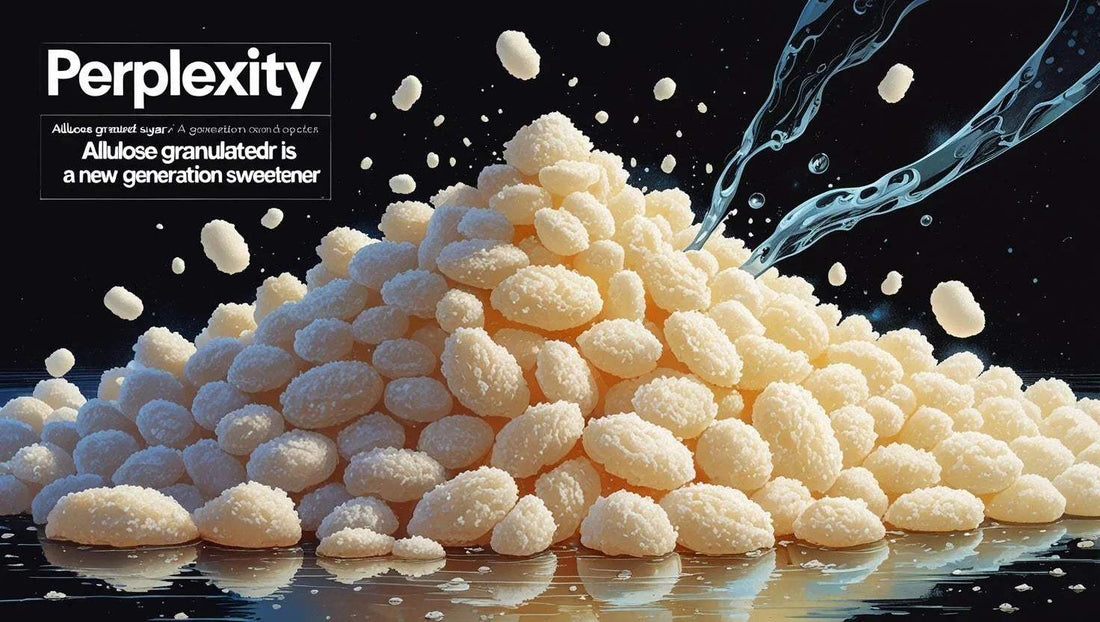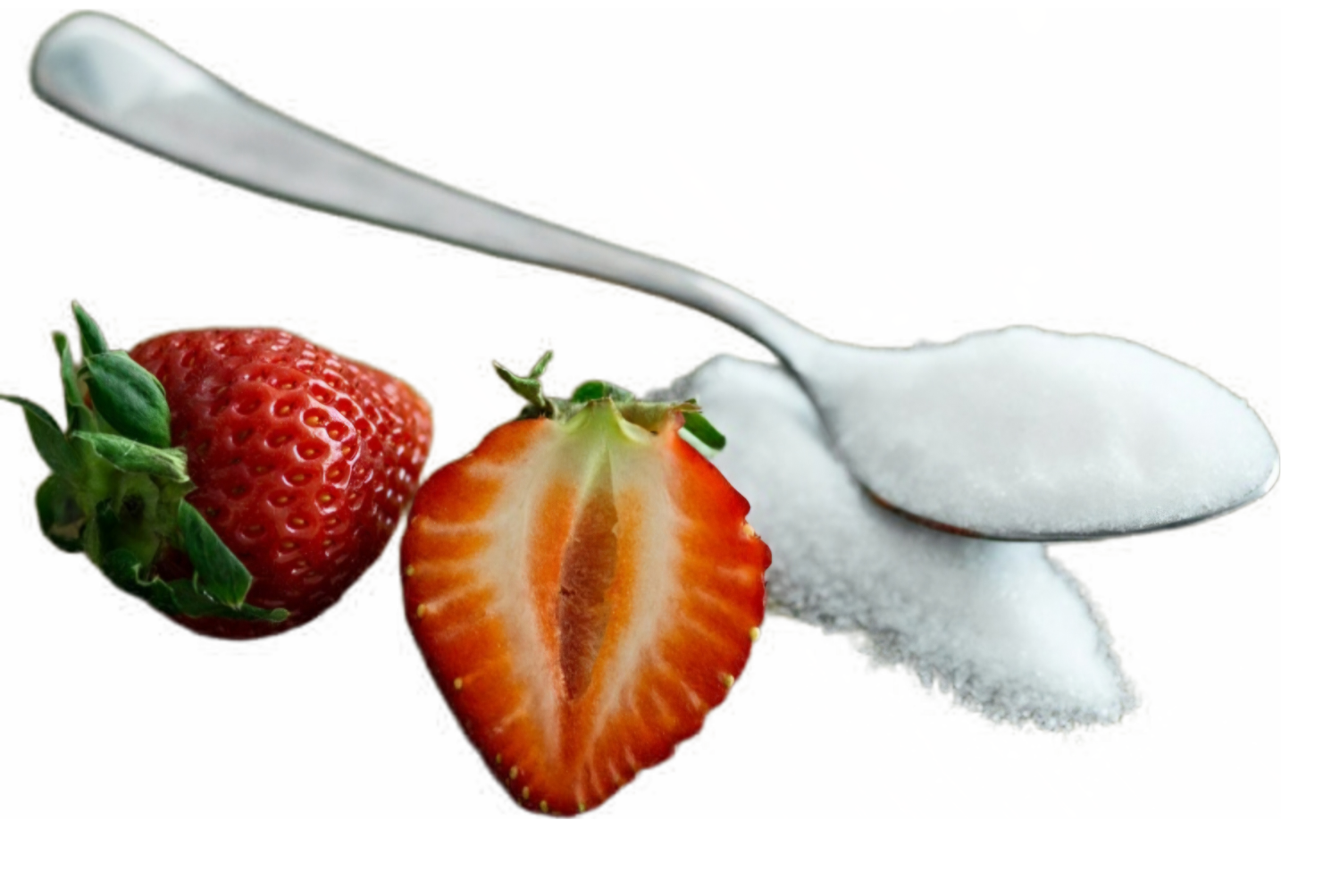
Perplexity, what do you know about allulose?
Allulose Store"Allulose is a new generation sweetener that is very similar to traditional granulated sugar in appearance, texture and taste, but has significantly different physiological effects.
A rare monosaccharide sugar
which is found naturally in certain fruits (such as figs, raisins, jackfruit) and sweet foods like brown sugar and maple syrup.
Allulose is very low in calories, about 0.4 calories per gram, compared to 4 calories for regular sugar.
The body absorbs it but does not metabolize it into blood sugar, so it practically does not raise blood sugar or insulin levels, making it especially recommended for diabetics and dieters.
As a new, naturally derived sweetener,
Allulose tastes similar to traditional sugar, but contains far fewer calories and carbohydrates.
FDA approved in 2015
its use as a food ingredient and is becoming increasingly popular in the health-conscious food market.
The benefits of allulose include reducing blood sugar levels in the postprandial phase (after a meal), promoting fat burning, antioxidant and anti-inflammatory properties, and not causing tooth decay.
In summary
Allulose is a low-calorie, natural sugar substitute that does not raise blood sugar levels and may provide several health benefits, especially for diabetics and dieters.
Main features
Its energy content is negligible compared to traditional sugar: it contains only 10% of the calories of granulated sugar.
Its sweetening power is similar to sugar, but slightly less sweet, so you need to use a little more of it to achieve the same sweetness.
It has no glycemic effect, meaning it does not raise blood sugar levels, so it can be consumed by diabetics and those with insulin resistance.
It does not cause an increase in insulin levels and is not converted into fat in the body, and has a beneficial effect on metabolism.
It is excellent for baking and cooking, as it is heat-stable and does not leave an unpleasant aftertaste.
It is a natural sweetener, gluten-free, and generally available free of additives.

What effects does allulose have on blood sugar and insulin?
Allulose has positive effects on blood sugar and insulin, especially for diabetics and those with insulin resistance.
Main effects
- It significantly reduces postprandial (after-meal) blood sugar spikes, especially after consuming carbohydrate-rich foods.
A 2024 meta-analysis found that 5–15 g of allulose per day reduced the duration of blood glucose levels above the target range by 8.8% and improved the blood glucose curve (glucose AUC) in type 2 diabetics.
- Its action can be explained by inhibiting glucose absorption in the intestine (blocking GLUT2 transporters) and reducing glucose production in the liver.
- It stimulates an increase in GLP-1 (glucagon-like peptide-1) levels, which promotes insulin production and reduces appetite, helping to stabilize blood sugar levels.
- Clinical studies have shown that a 12-week course of allulose resulted in a 0.3–0.5% reduction in HbA1c in diabetic patients, indicating improved long-term blood sugar control.
Allulose does not raise blood sugar or insulin levels,
It is therefore safe for use by diabetics or those following a low-carb ketogenic diet.
Overall
Allulose has a stabilizing effect on blood sugar and insulin levels, can help improve glucose metabolism, and supports insulin sensitivity.
Health benefits:
It can help reduce calorie intake, thus supporting weight control.
It does not cause blood sugar fluctuations, so it is especially recommended for low-carb or sugar-free diets.
Some research suggests that allulose increases a hormone called GLP-1 in the body, which improves insulin sensitivity and may help with weight loss.
It has no significant side effects, but if consumed in large quantities – like many other sugar substitutes – it may cause digestive problems.
Availability and price:
Allulose is available in granulated form, for example in a 340 gram package, for around 19 euros.
Its distribution in the EU may still be limited, but it is already available in some online stores.
Its price is currently higher than that of conventional sugar, but is expected to decrease as production increases.
How do I use allulose in baking and cooking?
Allulose is great for baking and cooking and has many advantages over traditional sugar. Here are some key facts and tips for using allulose:
- Substitution ratio: Generally, you can substitute allulose for sugar in a 1:1 ratio for cookies, cakes, and creams, but some recipes may require minor adjustments. For example, for puddings, 1.3 cups of allulose is recommended instead of 1 cup of sugar for the right consistency.
- Baking time and temperature: for allulose, a 5-10% shorter baking time and a lower (approx. 163 °C) baking temperature are recommended because it has a lower glass transition temperature (32 °C versus 70 °C for sugar), making it less prone to overspreading during baking.
- Texture and consistency: allulose results in softer, moister cookies, so it's worth using 15% less liquid or extending the baking time a little.
- For some baking applications, such as yeast breads, allulose is not optimal because the yeast needs real sugar to rise.
- Aromatic additives: adding citric acid to fruit cakes improves shelf life, and slightly increasing the amount of vanilla extract can enhance the flavor.
- Allulose is highly soluble, so it can be used in cooking, sauces, and beverages (coffee, tea, smoothies).
Summary:
Allulose provides a similar experience to traditional sugar, but is almost calorie-free, does not raise blood sugar levels, and can be a favorable choice from a metabolic perspective, especially for dieters, diabetics, or health-conscious consumers.
"Allulose can be a good alternative to sugar in baking and cooking, but slight recipe modifications may be required for optimal results."

